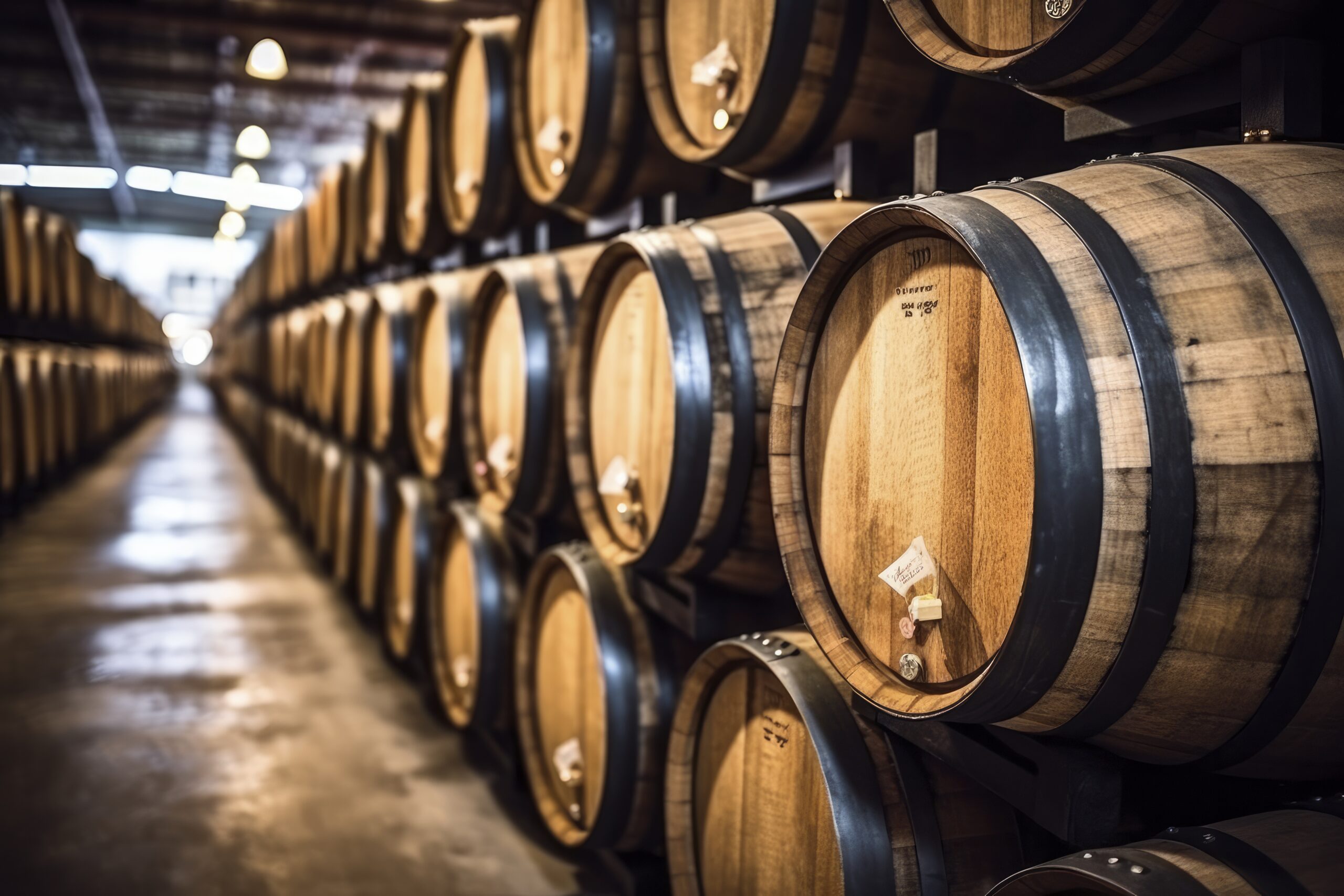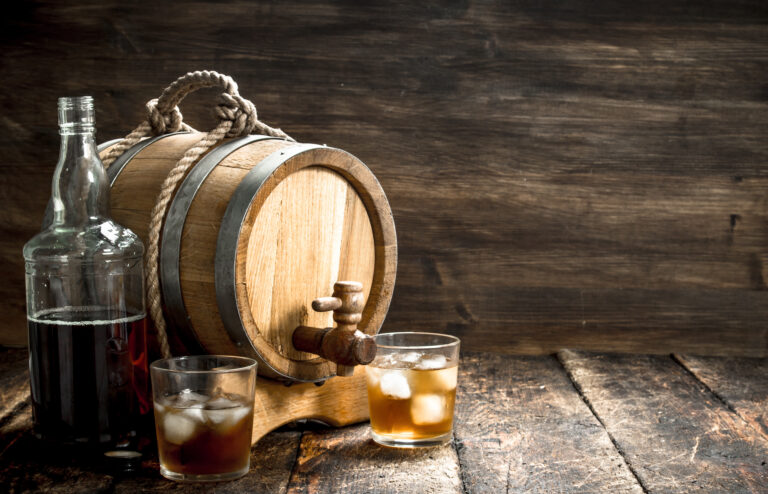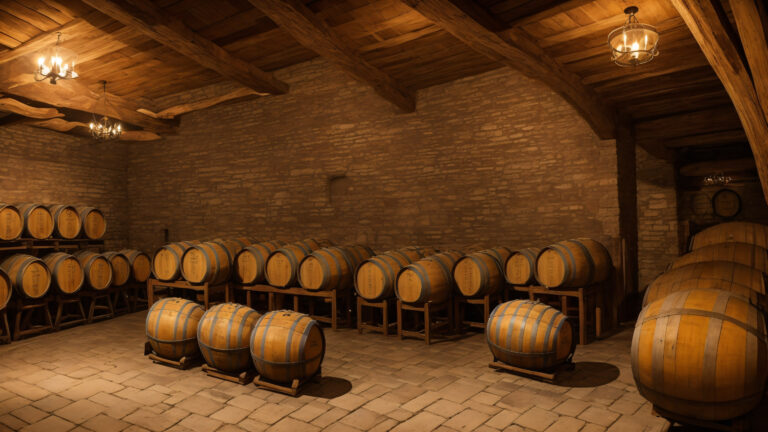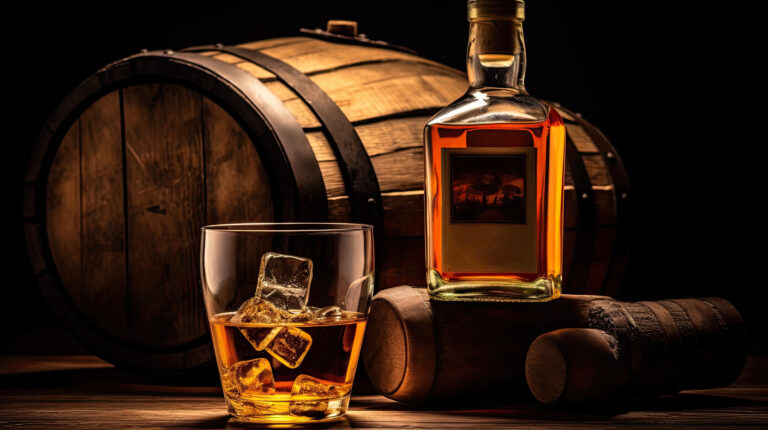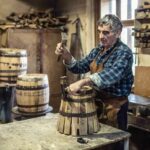Ever wondered how some whiskeys achieve that incredible depth and complexity of flavor? The secret often lies in an age-old technique called solera aging. This isn’t just about letting whiskey sit in a barrel; it’s a dynamic process where new spirit is introduced to barrels already holding older, more mature whiskey. The younger spirit then “learns” from its elders, taking on characteristics that create a blend across ages far more intricate than anything from a single barrel.
The solera method actually started in Spain for aging sherry and brandy, but today, innovative distillers worldwide are embracing it to craft truly unique and memorable whiskeys. If you’re someone who appreciates a fine dram, understanding solera aging is like unlocking a hidden chamber in the world of premium spirits, revealing how some brands achieve such richness and nuanced flavor. Let’s dive deeper into this ancient art and discover why it produces some of the most exceptional whiskeys you can buy.
What Exactly Is Solera Aging?
Solera aging is a pretty intricate dance where whiskey matures within a system of barrels, ultimately producing a wonderfully complex and harmonious spirit. Think of it as a carefully orchestrated ballet performed by master distillers who meticulously blend and age spirits within a solera system, which houses multiple barrels at varying stages of maturation.
Here’s how the solera system typically works its magic: some of the aged whiskey is periodically drawn from the bottom barrel for bottling. This barrel is then refilled with whiskey from the barrel directly above it, and this chain reaction continues all the way up to the top barrel, which receives fresh, new spirit. This gradual, continuous blending of different ages creates an incredibly smooth, consistent flavor profile that truly is greater than the sum of its parts.
Some of the amazing benefits of solera aging include:
- Consistent flavor profile: By continuously blending different ages, the master distiller can consistently achieve a specific, signature taste for their whiskey batch after batch.
- Added complexity: This method allows for a beautiful interplay where younger, bolder spirits are perfectly balanced with older, mellower whiskeys, adding incredible depth.
- Maximized warehouse space: The solera system is surprisingly efficient, allowing more whiskey to mature within a given space.
- Sustainable production: Barrels are never completely emptied, meaning a portion of that precious aged spirit always remains to mingle with the new, ensuring continuity.
The solera technique has been a secret weapon for centuries, used to age sherry, rum, and brandy. When applied to bourbon and single malt whiskey, it truly unlocks an unparalleled depth of flavor and aroma. If you’re eager to experience the art of solera firsthand, keep an eye out for whiskeys specifically marked as aged using this time-honored method. Your taste buds will definitely thank you!
The Spanish Roots of the Solera System
The solera aging process has been perfecting sherry, wine, and brandy for centuries in Spain. Now, whiskey makers have wisely adopted this tried-and-true technique to craft their own complex, intensely flavorful spirits.
At its heart, the solera system involves aging whiskey in barrels, then blending it with younger whiskey to create the final product. Imagine barrels stacked in a pyramid shape, with the most ancient whiskey residing in the bottom layer. When whiskey is drawn from this lowest layer for bottling, it’s replenished with whiskey from the layer directly above. This continues upwards through the pyramid, with the very top layer receiving fresh, new whiskey.
This ingenious system, born in Spain for aging sherry, masterfully allows liquids to mature while guaranteeing incredible consistency in flavor. As spirits gradually evaporate (the “angel’s share”) and the barrels impart their rich oak flavor over years, or even decades, the solera blending process weaves together a harmonious product that’s truly greater than its individual components.
Some of the world’s most renowned and sought-after whiskies leverage solera aging, including names like The Macallan and Highland Park. This technique demands a significant investment, as barrels and inventory must be meticulously maintained for extended periods. But when executed with precision and care, the results are undeniably worth it.
Solera aging is a time-tested method that brilliantly utilizes both barrel variation and the subtle blending of many vintages to produce whiskey with unparalleled depth, complexity, and consistency. For whiskey connoisseurs and spirit aficionados alike, solera-aged whiskies truly represent the pinnacle of the distiller’s art.
Unpacking the Solera Process: How It Works
The solera aging process is a traditional yet ingenious method of barrel aging and blending whiskeys that consistently delivers a complex, layered flavor profile. Here’s a closer look at its inner workings:
- The solera process kicks off by filling a series of barrels, often called criaderas, with new whiskey. Typically, you’ll see 3 to 5 barrels used for a solera system.
- As the whiskey ages gracefully in the criaderas, a portion of it is carefully transferred to the next barrel down the line. The very last barrel in this sequence is known as the solera, and it proudly holds the oldest whiskey in the system.
- Once a portion of the solera (the final, aged blend) is bottled for sale, the amount removed is then replaced with whiskey from the first criadera. This fascinating process repeats every time whiskey is drawn from the solera for bottling.
This gradual, continuous blending of ages ensures a whiskey with a consistent, beautifully balanced flavor that somehow manages to evolve in complexity over time. While no two bottlings are exactly identical, the signature taste profile of the solera is always wonderfully maintained.
A key aspect is that the solera and criaderas are never fully emptied. This means they always contain a harmonious blend of whiskeys of many different ages. The solera itself might hold whiskeys aged for 10, 15, or even a remarkable 25 years or more!
Since these barrels are never completely drained, their interiors develop a rich “patina” over time, which imparts even more unique flavor and color to the whiskey. The very walls of the barrel absorb and release aromatic compounds back into the whiskey throughout its aging journey.
The blending of these different ages also creates an incredible “averaging effect,” smoothing out any rough edges present in younger whiskeys. Harsher compounds gradually break down over time, leading to a wonderfully mellow, rounded flavor.
The solera process demands meticulous record-keeping to keep tabs on the intricate web of ages and blends within each barrel. A solera master blender relies on years of invaluable experience to craft that absolutely ideal blend.
This age-old solera technique has perfected wines and spirits for centuries, resulting in uniquely complex and balanced flavors that truly stand the test of time. It’s a method that will continue to produce memorable, artisanal whiskeys for generations to come.
The Subtle Chemistry Behind Solera Aging
The solera aging process isn’t just about time; it’s a dance of complex chemical reactions that slowly, magically transform the whiskey. As the whiskey matures within those wonderful barrels, several key factors come into play:
Evaporation: The Angel’s Share
Around 2% of the whiskey gracefully evaporates each year – affectionately known as the “angel’s share.” While this reduces the volume, it profoundly concentrates the flavor and aroma compounds that remain nestled within the barrel, intensifying the spirit’s character.
Oxidation: Mellowing the Spirit
Oxygen subtly permeates the barrel through the wood, reacting with various compounds in the whiskey. This crucial interaction helps mellow the spirit and bestows aged whiskeys with their distinctive nutty, sherry-like flavors. In solera aging, oxidation is carefully managed to prevent any undesirable over-oxidation.
Extraction: The Barrel’s Gift
The whiskey is constantly extracting flavorful and aromatic compounds from the oak barrel. Think of delightful notes like vanillin, lactones, and tannins. The longer the whiskey ages, the more of these compounds it absorbs, building incredible layers of complex flavors.
Blending: The Harmony of Ages
As whiskeys of different ages are carefully blended together within the solera system, their flavors mingle and marry to create a truly harmonious spirit. Compounds extracted or created at various points during aging are expertly blended, ensuring that while no two bottlings are ever quite the same, they all share a beautiful, underlying consistency.
The solera technique hinges on the delicate balancing act of all these chemical factors. By meticulously monitoring and blending spirits of increasing age and complexity, master blenders craft a whiskey that truly showcases the very best qualities that oak barrel aging has to offer. The solera method may be an ancient art, but it produces a spirit that is always beautifully evolving.
Why Solera Aging Is a Game-Changer for Whiskey
Solera aging offers whiskey makers a unique opportunity to blend new and old whiskies together, creating a complex flavor profile that brilliantly accentuates the best qualities of each. Here are a few compelling reasons why solera aging is an ideal method for whiskey:
Unwavering Consistency
One of the standout benefits of solera aging is the consistent flavor profile it delivers year after year. As fresh whiskey enters the system and older whiskey is drawn out, the overall flavor remains remarkably steady. This is because, at any given moment, the solera contains whiskey of many different ages expertly blended together. While no two batches are absolutely identical, the differences are often subtle, ensuring that for whiskey drinkers, you can expect a familiar, comforting taste every time you open a new bottle.
Unrivaled Complexity
The blended ages within a solera system allow for the development of incredibly complex flavors that simply wouldn’t be possible in a single-batch aging process. As whiskey ages, its flavors evolve in fascinating new ways. The genius of solera lies in blending younger, vibrant whiskey with older, mellower whiskey, creating layers of flavors that beautifully complement each other. Imagine notes of vanilla and oak from long aging mingling with the fresh fruit and cereal tones from younger whiskey. This captivating interplay of flavors produces an intricately complex taste that truly stands out.
Efficient Resource Management
Solera aging proves to be an efficient use of resources because not all the whiskey needs to be aged for an extended period. As some whiskey is removed from the system for bottling, it frees up valuable space for new whiskey to enter the solera. This means a distillery doesn’t have to dedicate as many barrels solely for long-term aging. They can bottle more whiskey in a shorter amount of time while still achieving a high-quality, beautifully aged product.
Ultimately, solera aging is a true art form that empowers whiskey makers to craft a spirit with layers of flavor that gracefully unfold with each sip. By expertly blending whiskies of different ages, distillers can create a product that is undeniably greater than the sum of its parts. The result is a whiskey that feels both familiar yet forever new, complex yet approachable, all at once.
The Delicious Impact of Solera Aging on Flavor
Solera aging is a master key that unlocks a complex orchestra of flavors in whiskeys over time. The careful blend of young and old whiskeys creates a harmonious spirit that beautifully showcases wood notes at their absolute peak.
Vanilla and Caramel: Sweetness from the Cask
As whiskey matures in oak barrels, it lovingly absorbs the barrel’s inherent vanilla and caramel flavors. The longer a whiskey ages, the more pronounced these sweet notes become. Solera aging provides a magnificent spectrum of ages, allowing both subtle and robust vanilla and toffee flavors to truly shine through.
Spice: A Warm Embrace
Oak barrels also generously impart warm, woody spices like clove, nutmeg, and cinnamon. Solera aging blesses a whiskey with a medley of spice flavors, ranging from a mildly peppery kiss to richly spiced nutmeg and clove. The younger and older whiskies in the blend perfectly balance each other, ensuring no single flavor overpowers the exquisite harmony.
Dried Fruit: A Rich Depth
Over many years of barrel aging, whiskies often develop delightful hints of dried fruit, such as apricot, prune, raisin, or fig. Solera aging cleverly accelerates this process, with the older whiskies imparting rich, concentrated fruit flavors to the blend. You’ll often find tasting notes describing solera-aged whiskeys as having a “Christmas cake” quality, with a wonderful mix of spice and dried fruit.
Smoke: A Mellow Whisper
For whiskeys crafted from peated malts, solera aging is instrumental in integrating those distinctive smoky flavors with the oak-driven notes. The smoke softens and becomes more rounded over time, beautifully balanced by the sweet vanilla and spice notes. The result is a mellow, layered smokiness that elegantly lingers on the palate.
Solera aging truly orchestrates a symphony of flavors that would be incredibly difficult, if not impossible, to achieve through decades of maturation in a single barrel alone. By blending young and old, this time-honored technique produces whiskeys of uncommon depth, complexity, and harmony. The solera method may be an ancient art, but its results are nothing short of whiskey perfection.
Renowned Whiskey Brands Embracing Solera Aging
Some of the most distinguished whiskey brands proudly utilize the solera aging method to craft their signature, sought-after flavors. These include:
- Johnnie Walker: This iconic brand blends whiskies from distilleries across Scotland, aging them meticulously using the solera method. Their renowned Blue Label blend is aged a minimum of 25 years, with some whiskies in the blend over 40 years old, creating an exceptionally complex yet incredibly smooth flavor profile.
- The Macallan: As one of the most prestigious single malt Scotch whisky distilleries, The Macallan is celebrated for its sherry oak aged whiskies. Their Rare Cask and Estate bottlings are aged using the solera method, with whiskies up to 50 years old expertly blended together. The outcome is a whiskey brimming with rich flavors of dried fruits, oak, and spice.
- Glenfiddich: Producing exquisite single malt Scotch whiskies, Glenfiddich employs the solera vat aging method for their 21 Year Old Gran Reserva. They blend whiskies aged in bourbon barrels and sherry casks for up to 21 years, then finish aging them together in sherry casks. This process yields a whiskey with captivating flavors of ginger, nutmeg, wood, and dried fruit.
- Compass Box: An innovative independent bottler, Compass Box sources and blends single malts and malt blends from across Scotland. They are celebrated for their cutting-edge approach to whiskey making and frequently leverage solera aging for their limited edition and special bottlings. Their No Name and Peat Monster Arcana bottlings are aged using the solera method, blending whiskies up to 20 years old to create truly unique flavor profiles.
The solera method of aging is a profound art form that the master blenders at these brands have perfected over generations. The magnificent result is an elegant and complex whiskey that continues to evolve and reveal new facets over decades. By blending whiskies of different ages together, they craft a harmonious spirit that is undeniably greater than the sum of its parts.
The Stirring Debate Around Solera-Aged Whiskeys
The solera aging method isn’t without its detractors, sparking a lively controversy where proponents champion its superior flavor and critics argue it can be misleading.
Blending Aged and Unaged Whiskeys: A Matter of Transparency
Because the solera system blends whiskeys of different ages, the exact age of any given bottle remains, to some extent, a mystery. Purists argue this lacks transparency. However, advocates counter that solera-aged whiskeys achieve an unparalleled depth and complexity of flavor from the mingling of ages—a richness that a single-barrel aging process could simply never produce.
Loss of Distinctive Character: A Harmonious Blend?
Critics contend that blending ages strips away the distinctive character imparted to a whiskey from years of maturation in a single barrel. Conversely, proponents argue that solera-aged whiskeys develop their own unique and complex character through the gradual, continuous blending across barrels.
Difficult to Replicate: An Art, Not a Formula
The solera system relies on a “fractional blending” method that demands incredibly precise control and consistency to achieve an optimal balance of flavors. This level of skill and artistry is genuinely difficult to replicate, leading some to question the authenticity of newer solera-aged whiskeys. Nevertheless, when executed properly by true master blenders, the solera method can absolutely create whiskeys of exceptional quality.
Higher Prices: Justified by Excellence?
Some argue that solera-aged whiskeys are overpriced, given the unknown and often relatively young ages of some components. However, the solera method inherently requires more resources, expertise, and time, which naturally translates to higher prices. For many discerning drinkers, the unparalleled flavors of these premium craft whiskeys more than justify the cost.
The debate surrounding solera-aged whiskeys is complex, with valid points on both sides. Ultimately, the proof is in the tasting – if a solera-aged whiskey delivers a transcendent experience, does its precise method of production truly matter? The controversy seems likely to continue, but for those genuinely seeking the pinnacle of flavor, solera-aged whiskeys remain at the cutting edge of the craft spirit world.
The Bright Future of Solera Aging in Whiskey
The solera aging process has been a secret weapon for centuries in creating complex, flavorful spirits, but its application for whiskey is still very much evolving. As the demand for premium, artisanal whiskey continues to surge, more and more distillers are enthusiastically experimenting with solera aging to craft unique, truly memorable products.
The Art of Blending Old and New
By expertly introducing both newly distilled and wonderfully aged whiskey into the solera, master blenders can conjure a harmonious, multi-dimensional spirit. The younger whiskey contributes fresh, vibrant flavors, while the older stock lends invaluable depth, richness, and that signature oak character. Blending them together results in a whiskey with an intricate balance of youthful vigor and mature grace.
Finishing in Unconventional Barrels
Some pioneering distillers are taking solera-aged whiskey a step further by finishing it in barrels that previously held other spirits, such as rum, brandy, or wine. This imparts subtle yet fascinating flavors from their first use while still allowing the essential character of the whiskey to shine through. Port, sherry, and Madeira casks are also popular choices for finishing, leading to whiskies with delightful dried fruit and nutty undertones.
The Power of Blending Multiple Soleras
Master blenders are even experimenting with marrying different types of soleras, varying in age and cask treatments, to create genuinely unique, proprietary blends. By intermingling soleras in varying proportions, they can craft whiskies with distinctive flavor profiles tailored to specific markets or consumer tastes. These bespoke blends truly represent the pinnacle of a blender’s artistry.
A Promising Horizon
As whiskey makers continue to push the boundaries of their craft, solera aging is poised to become an even more indispensable tool for creating innovative, memorable spirits. Blending across multiple soleras and fearlessly experimenting with alternative casks will undoubtedly lead to exciting new taste experiences and deeper insights into the fascinating interactions between wood, spirit, oxygen, and time. The future of solera-aged whiskey is an open book, and distillers are writing a thrilling new chapter with every barrel they fill.
Final Sips
So, there you have it: solera aging in a nutshell. This ancient technique of blending whiskeys from different barrels and vintages truly results in a complex, full-flavored spirit unlike any other. The solera method is genuinely an art form that demands immense patience, unparalleled skill, and an unwavering commitment to quality. While the process itself may seem intricate, the end result is beautifully simple: a smooth, richly layered whiskey that tastes simply phenomenal. If you’re on the hunt for an extraordinary sipping experience, absolutely seek out a solera-aged whiskey. One sip, and you’ll instantly understand why this remarkable technique has endured for centuries. Solera aging – it’s not just an art; it’s whiskey perfection.
